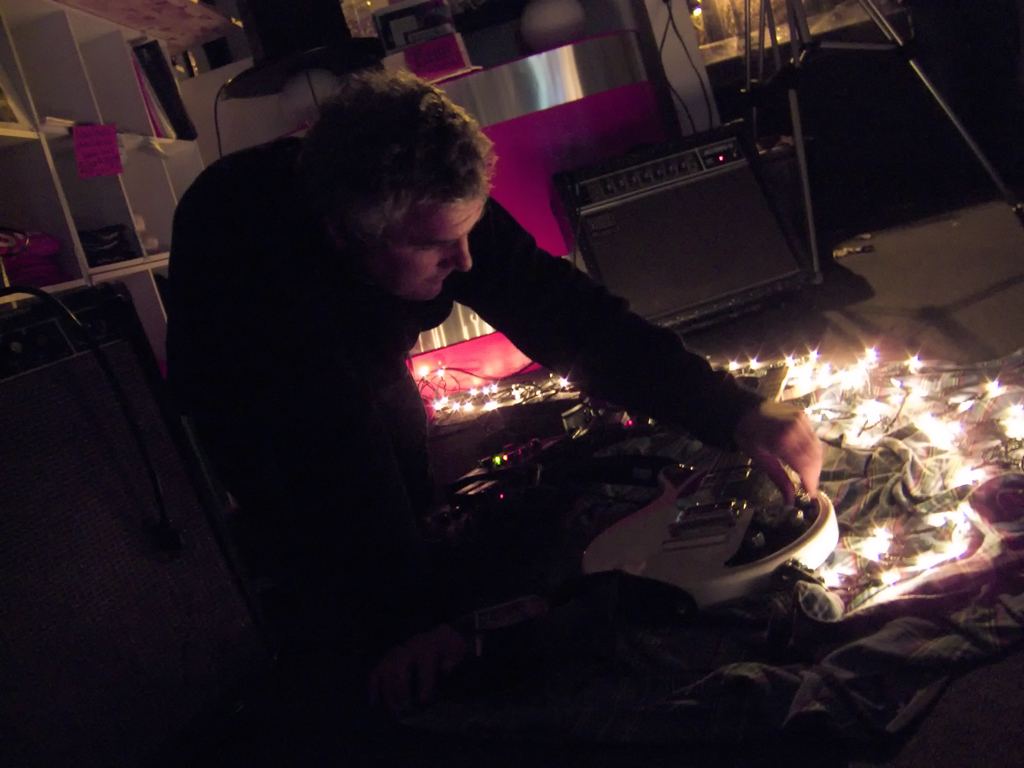It may be old news now, but Seed Magazine has published a piece called The Shape of Music that describes two mathematicians’ attempt to represent the multi-dimensionality of harmony and melody using “the geometry and topology of what mathematicians call ‘quotient spaces’ or ‘orbifolds.'” The author does a commendable job of making these and other mathematical ideas approachable for the average reader (unordered sets, anyone?) , but does a pretty awful job convincing me, at least, that the result is meaningful in any musical way.
Here’s a section discussing major chords that opens up some of the problems of this type of analysis.
“These harmonies occupy the center of our musical spaces, and are thus able to take effective advantage of its non-Euclidean twists. Remarkably, in the 12-tone system of notes, these are precisely the chords that Pythagoras identified almost 2,500 years ago: the chords that sound intrinsically harmonious. Far from arbitrary or haphazard, scales and chords come close to being the unique solutions to the problem of creating two-dimensional musical coherence. Contrary to the hopes of generations of avant-garde composers, it follows that the goal of developing robust alternatives to tonality may be extremely difficult, if not impossible, to achieve.
The shapes of the space of chords we have described also reveal deep connections between a wide range of musical genres. It turns out that superficially different styles–Renaissance music, classical and Romantic music, jazz, rock, and other popular forms–all make remarkably similar use of the geometry of chord space. Traditional techniques for manipulating musical scales turn out to be closely analogous to those used to connect individual chords. And some composers have displayed a profound understanding of the higher-dimensional geometry of musical chords. In fact, one can argue that Romantic composers such as Chopin had an intuitive feel for non-Euclidean higher-dimensional spaces that exceeded the explicit understanding of their mathematical contemporaries.”
First, there’s the wholly appropriate invocation of Pythagoras; this is, after all, an article about music and mathematics. But there’s no recognition that Pythagoras’ simple whole number ratios which produce consonances (octaves, perfect fifths and fourths, etc.) no longer exist in most music heard today. Thanks to equal temperament tuning, the predominant mathematical concept which most composers “intuit” is actually the twelfth root of two–a number Pythagoras would have found abhorrent. It seems our notion of consonance has more to do with cultural norms than mathematical underpinnings. Which turns out to be a better explanation for why “Renaissance music, classical and Romantic music, jazz, rock, and other popular forms” all share a common approach to harmony and melody.
And that brings up another area where this analysis goes off the rails: it defines a huge practice in a limiting way and then uses that definition to justify why the rest of that practice isn’t valid. Paradoxically, this is a kind of logic shared by so many of those “generations of avant-garde composers” to which this article pays backhanded tribute. Schoenberg’s 12-tone technique comes to mind as a mathematically sound system for making music (pitch class sets, anyone?). But the system alone doesn’t ensure the resulting music is great; neither does it invalidate music produced by other means.
The author concludes the article with a mention that the same geometrical analysis is being applied to economics. I imagine they’re on to something here. Maybe they’ll discover that the market has an intuitive feel for non-Euclidian higher-dimensional spaces, too
Pi is such an ugly number. How could circles be so beautiful?



